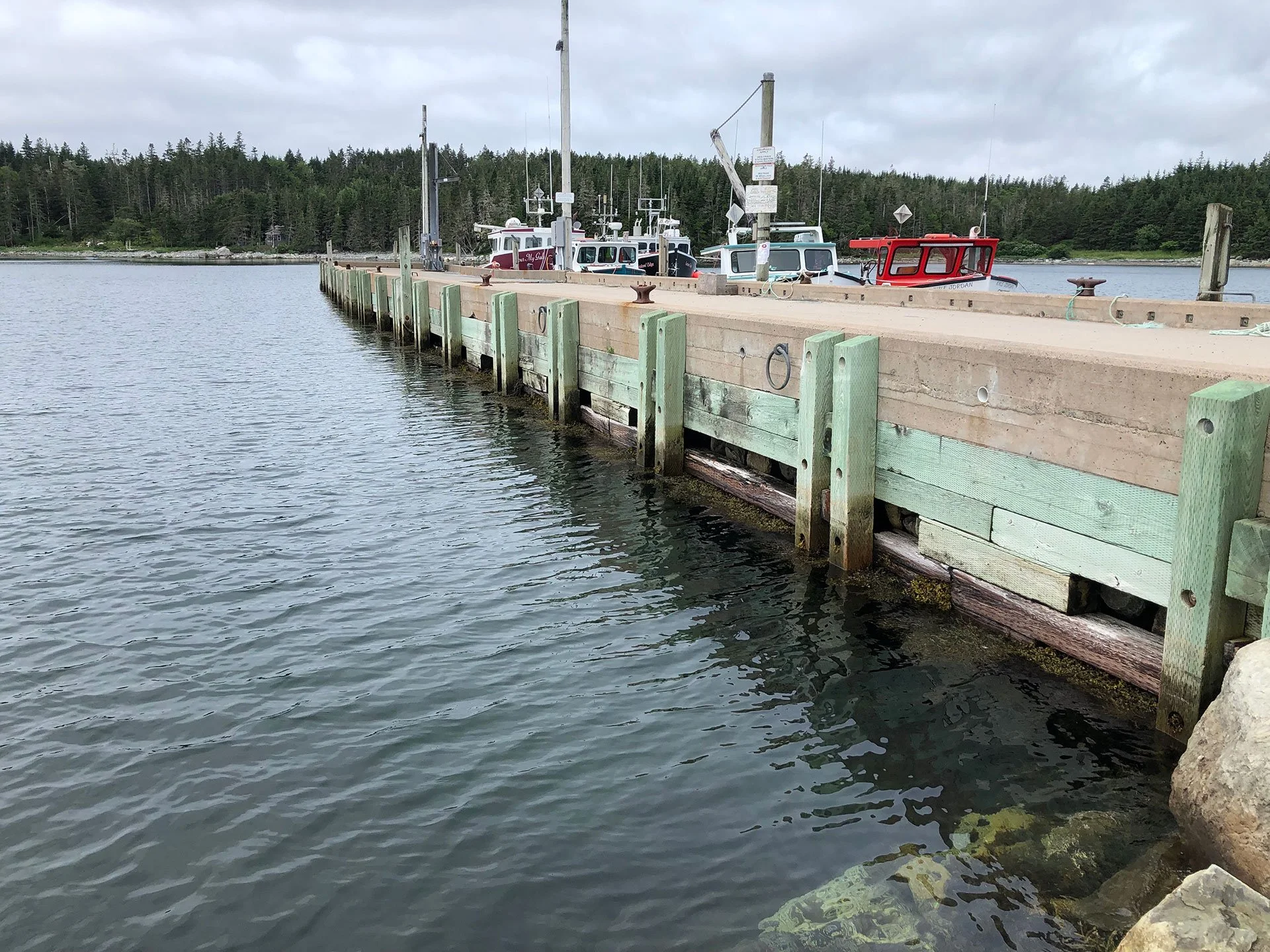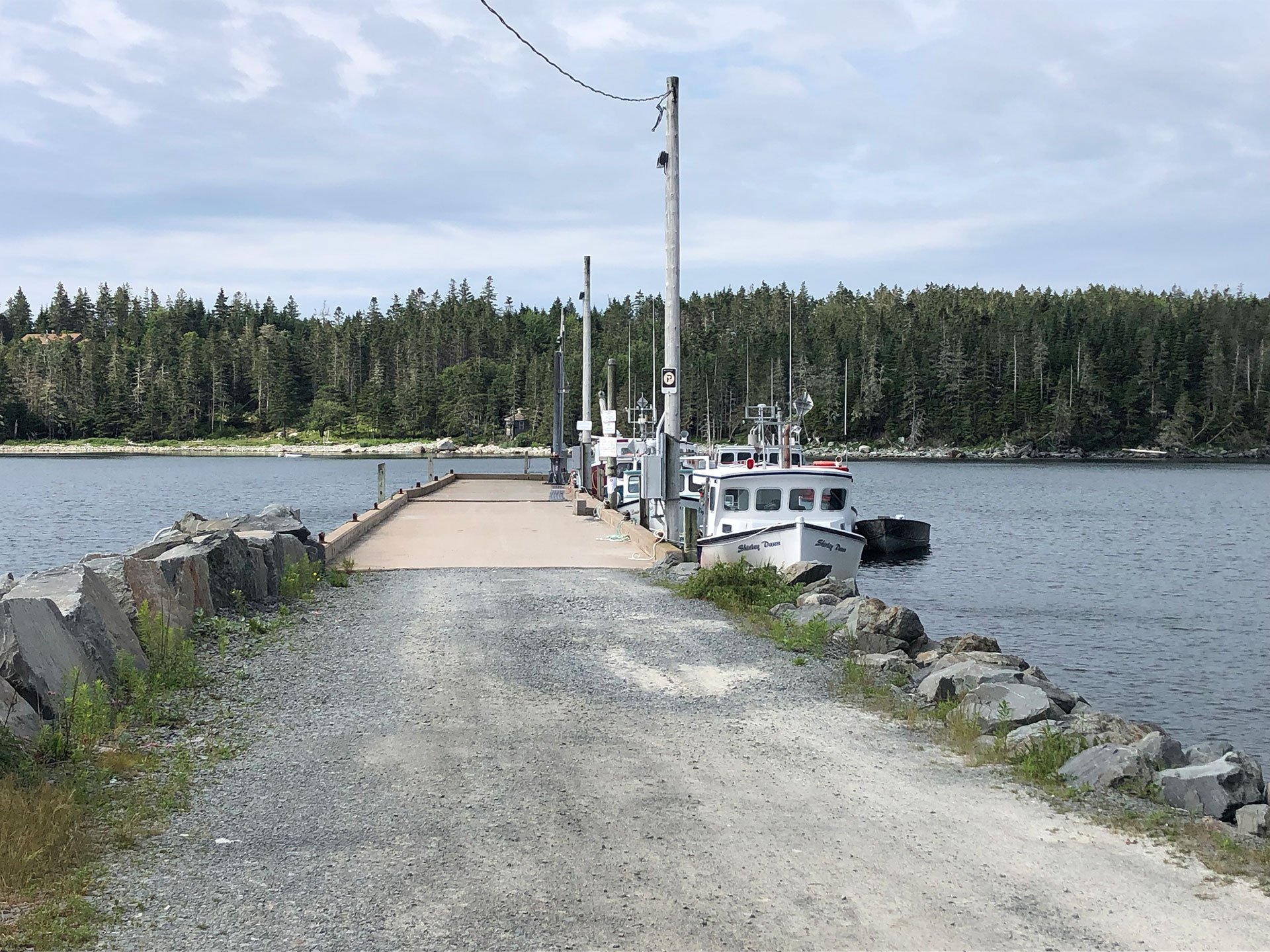Carter’s Point Wharf 410 Reconstruction
Location: Carter’s Point, Nova Scotia
Client: Department of Fisheries and Oceans, Small Craft Harbours
Timeframe: 2023-2025
Key Staff: Greg MacDonald, Todd Menzies, Nick Thibodeau
Project Description
Carters Point Wharf was an existing creosote timber crib structure that was deteriorated and require replacement. Harbourside Engineering was hired by DFO Small Craft Harbours to design the demolition and reconstruction work with a Berlin Wall. Also, the project included the engineering design and construction of a new launching ramp and containment cell to store the dredge materials created during construction. The project’s design phase was completed in 2023, and construction was completed in 2025.
Harbourside’s Role
For this project, Harbourside was engaged as the prime engineering consultant to complete the planning, design, and contraction oversight for the reconstruction of the Carters Point Wharf. This project was broken down into four phases including: the pre-design phase; the detailed design phase, the tender phase and the construction phase. Below, we have highlighted the key tasks performed during each stage of the project.
Carters Point Wharf Pre-Design Phase
In the pre-design phase, the key task included a site investigation. This was comprised of an existing facilities assessment, and the performance of a site geotechnical investigation. During the facilities assessment, Harbourside Engineering was able to determine the level of deterioration of the existing structure. For its part, the geotechnical investigation helped inform the detailed design phase.
Detailed Engineering Design Phase
The detailed design phase involved client and public consultations. The response from the community and the client helped harbourside to gauge what was truly required from the design of the new wharf structure. Armed with this feedback and information, the detailed design of the new Berlin Wall structure, concrete launching ramp, and onsite containment cell could begin in earnest. The design also included development of the specifications and capital cost estimate. During this phase, design review meetings were completed at 50%, 99%, during which the tender documents were finalized. These design review meetings included the review of the drawings package, project specifications, capital cost estimates, project schedule, and a review of the risks to the project.
Tendering and Construction
After the construction documents had been developed, Harbourside Engineering provided support during the tender phase by answering technical queries, providing additional information to bidders, and preparing addendums. During construction, Harbourside was onsite to oversee the construction work. This included completing inspections, quantity calculations and concrete testing from our materials and geotechnical division. In addition, Harbourside continued to review progress claims, change orders, shop drawings, and answer technical queries until the project was completed.
As part of this project, Harbourside was involved in supporting DFO SCH with their submissions to obtain the necessary environmental permits. This included developing existing conditions and conceptual new structure drawings which outlined the disturbed areas by the new work. During construction, Harbourside was onsite overseeing the construction work to ensure compliance with the applicable permits.
Unique Challenges
One of the main project challenges was encapsulating the existing wharf with a taller and wider structure. Another major challenge was dealing with environmental concerns. The first was dealing with the disposal of the existing creosote timbers. Secondly, dredging of contaminate spoils was required to facilitate construction of the new wall and launching ramp. To control project costs while working within the environmental constraints of the projects, we recommended minimizing demolition of the existing creosote timber crib and recommended the construction of an onsite containment cell to contain the dredge spoils.
Social Impact
The reconstruction of Carter’s Point wharf was one of the many such projects in Nova Scotia and the Maritimes to revitalize small craft harbours within the region. Although the use of creosote in marine environments has had few observable negative effects in Canadian field studies (summary on page 35), laboratory testing still demonstrates it can be potentially harmful if it leeches into soil or sediment. Ensuring portions of the creosote treated timbers were safely removed and contained with as little environmental impact as possible is a net-positive for the harbour, and the surrounding marine environment.






